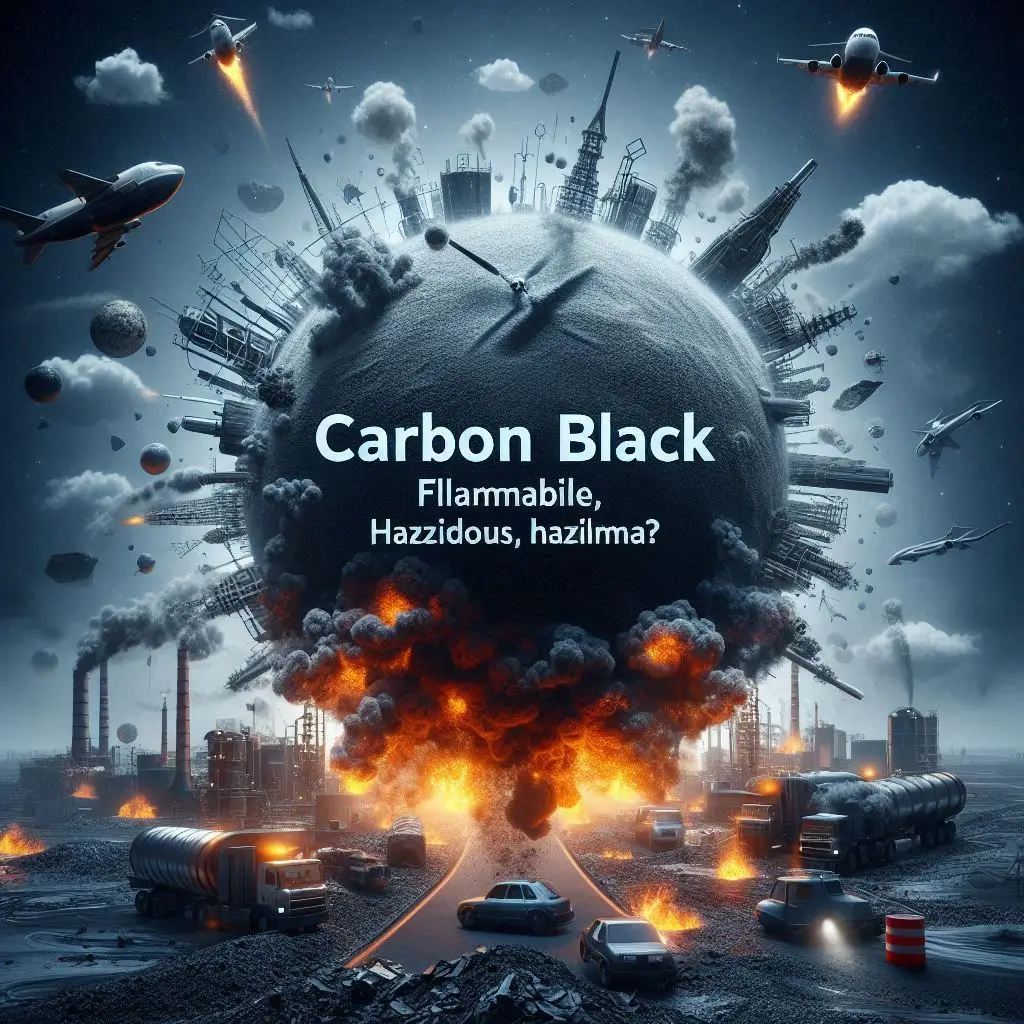
Is Carbon Black Flammable Hazardous Hazmat?
Introduction
Carbon black is a finely divided black powder created by the incomplete combustion or thermal degradation of hydrocarbons. It's commonly used in various industries such as rubber production, coatings, plastics, and printing inks. While carbon black is widely used, it's important to understand its potential risks, particularly regarding its flammability, hazard levels, and safety concerns. In this article, we'll answer whether carbon black is flammable, hazardous, and if it qualifies as a hazardous material (hazmat), while providing essential safety tips for handling this substance.
Is Carbon Black Flammable?
Carbon black, in its pure form, is not flammable. It is primarily composed of carbon, which is a non-reactive element. Due to its tiny particle size and structure, carbon black does not readily ignite or burn by itself. However, the situation changes when carbon black is mixed with other materials. The high surface area of carbon black allows it to adsorb volatile substances, such as solvents, gases, and liquids. These adsorbed compounds may increase the flammability of materials containing carbon black, especially in rubber or plastic products.
For example, when carbon black is used as a filler in rubber composites, it can absorb flammable vapors, which might make the overall material more combustible. This is particularly important in industries where carbon black is often combined with other materials for specific applications. As a result, manufacturers must take extra precautions to reduce the fire hazards associated with carbon black, especially when incorporated into other compounds.
Is Carbon Black Hazardous?
Despite its non-flammability, carbon black poses certain health risks, particularly when inhaled or when it comes into direct contact with the skin or eyes. Prolonged exposure to carbon black dust can lead to respiratory issues, such as coughing, throat irritation, and lung problems. Long-term exposure, especially in high concentrations, may increase the risk of chronic conditions, including asthma, bronchitis, and even lung cancer in severe cases.
Skin and eye contact with carbon black can also cause irritation. Individuals handling carbon black may experience skin rashes or dryness, while exposure to the eyes may lead to redness and discomfort. Therefore, it's crucial to handle carbon black with care to avoid direct contact and inhalation.
Furthermore, carbon black has been classified as a possible carcinogen by the International Agency for Research on Cancer (IARC), placing it in Group 2B. This classification indicates that carbon black could potentially cause cancer, though more research is needed to fully understand its carcinogenic potential.
Is Carbon Black Considered Hazmat?
While carbon black is not considered a hazardous material (hazmat) in its pure form, it still requires careful handling due to its potential health risks. Fine particles of carbon black can become airborne and may be inhaled, leading to respiratory issues. This is the primary concern when working with carbon black in industrial settings.
To mitigate the risk of inhalation, it is essential to use appropriate respiratory protection, such as face masks or respirators, when working in environments where carbon black dust is prevalent. Additionally, carbon black may irritate the skin and eyes, so protective gloves and safety goggles should be worn to prevent direct contact.
Though carbon black itself is not flammable, its ability to absorb flammable materials can pose a fire risk when mixed with other substances. Proper storage and handling practices are necessary to prevent accidental ignition, especially when carbon black is stored in large quantities or mixed with combustible chemicals.
Safety Precautions for Handling Carbon Black
Given the potential health risks and safety concerns associated with carbon black, it's important to follow strict safety guidelines to minimize exposure and reduce the risk of accidents. Here are some essential safety precautions when handling carbon black:
1. Ventilation: Adequate ventilation is crucial to prevent the accumulation of carbon black dust in the air. Workspaces should be equipped with proper exhaust systems to ensure that airborne particles are removed from the environment.
2. Personal Protective Equipment (PPE): Workers should always wear the appropriate PPE, including gloves, goggles, and respiratory protection, to prevent skin contact, eye irritation, and inhalation of dust.
3. Proper Storage: Carbon black should be stored in airtight containers in a cool, dry place to prevent the accumulation of volatile substances. This reduces the likelihood of fire hazards associated with carbon black's ability to adsorb flammable materials.
4. Training and Awareness: Employers should provide thorough training to employees about the potential risks of carbon black and the importance of following safety protocols. Workers should be aware of the correct procedures for handling, storing, and disposing of carbon black.
Conclusion
In summary, while carbon black itself is not flammable or classified as a hazardous material (hazmat), it still presents significant health and safety risks. Its ability to adsorb volatile substances can increase the flammability of certain materials, and prolonged exposure can lead to respiratory and skin problems. Though carbon black is widely used in many industries, safety precautions such as proper ventilation, protective equipment, and careful handling are essential to mitigate the risks associated with its use. By following these guidelines, employers and workers can safely manage carbon black while minimizing potential hazards.

